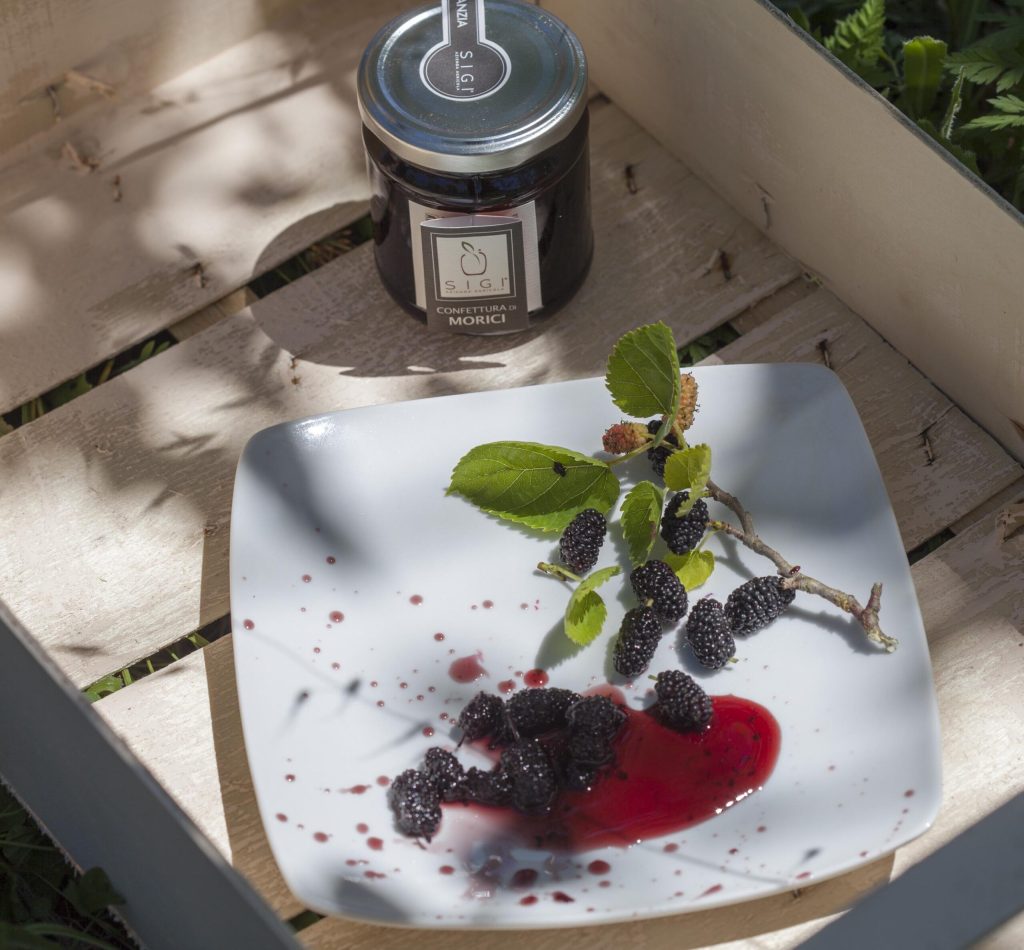THE BLACK MULBERRY TREE
In local dialect “Lu Moru”
Morus nigra L.
Moraceae
The black mulberry tree (Morus nigra) is native to China and it was introduced to Europe for the breeding of silkworms. It became popular, and it has spread in many regions of Italy. This variety is resistant to salt, so it can often be found along coastal areas. However, it is sensitive to cold weather, which is why it is described as a “patient, wise” tree.
Pliny the Elder described it as “sapientissima arborum”, which means the wisest of trees. This is because it waits patiently to produce new leaves in order to avoid even the latest frosts.
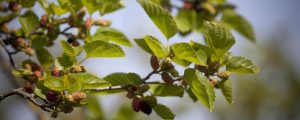
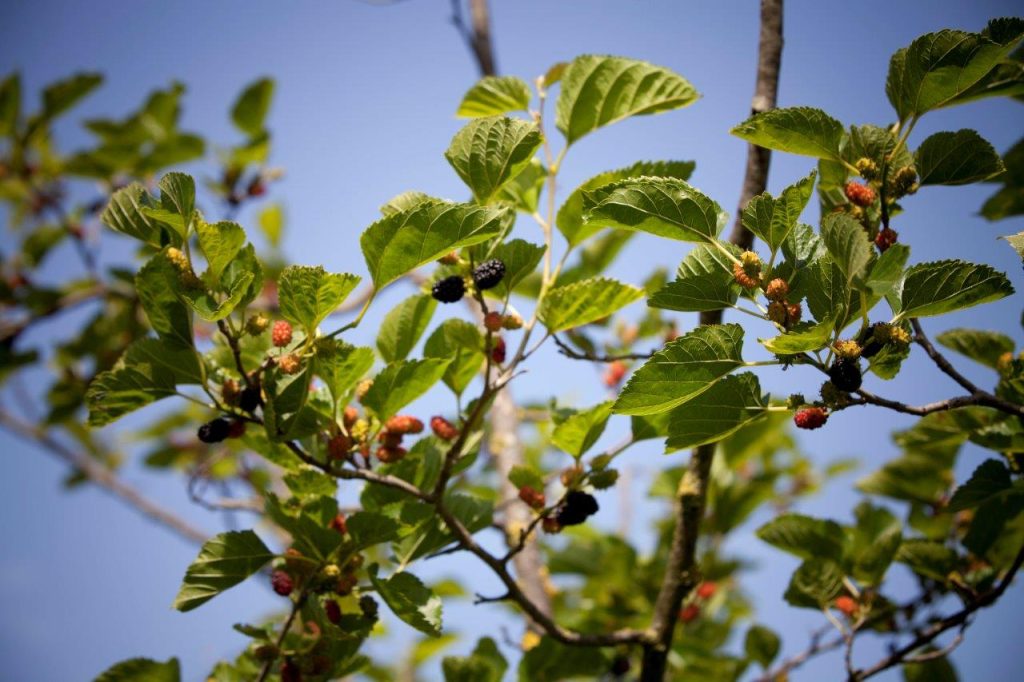
 BOTANICAL FEATURES
BOTANICAL FEATURES
- Leaves: they are medium-sized and bright green.
- Fruits: the mulberries are called morici in the Marche region, particularly in the province of Macerata
- Historical uses: It was planted along escarpments to prevent landslides, as a boundary between lands and often in rows near the manor houses in the Marche. These rows of mulberries can still be found today throughout the fields.
 LOCAL USES AND TRADITIONS
LOCAL USES AND TRADITIONS
- In Sicily, mulberries are eaten fresh or used in the preparation of desserts, jams and garnishes. In addition, the mulberry slush is extremely famous.
- The young, sweet leaves are edible for men too
- In Veneto, mulberry trees used to be planted next to henhouses because hens really enjoy its fruits.
- In Calabria, its wood is still used to make cheese moulds and collars for ovines and bovines.
- Its fruit was used as natural dye for fabrics.
- – Its wood was used to make barrels for vincotto (a traditional alcoholic drink, similar to mulled wine) as an alternative to oak wood.
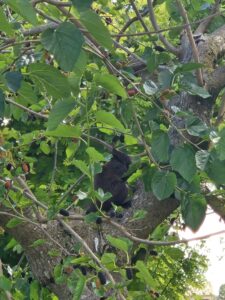
In the Marche region, mulberry cultivation has been very important for the breeding of silkworms.
After the age of Italian silk production, it was discovered that mulberry foliage was excellent as fodder for animals. So much so that it was said, “pe’ ngrassà li manzi ce vo la fava e la fronna de’ lu’ moru” which means “to fatten cattle, you need broad beans and mulberry leaves.”
Later, this tree was used as an ornamental plant, thanks to its elegant habit and golden foliage. Unfortunately, its uncollected fruits would spoil the streets and cars, and gradually, increasingly more fruitless mulberry trees were selected.
Today they have almost completely disappeared, and we are among the few who replanted them in order to preserve these trees, rich in history and delicious fruits.
In this video you can see how we produce our mulberry jam
 THE MULBERRY TREE IN LITERATURE
THE MULBERRY TREE IN LITERATURE
One of the most famous mentions of the mulberry tree is found in the myth of Pyramus and Thisbe, as narrated by Ovid in his Metamorphoses.

Pyramus and Thisbe were two young lovers from Babylon. They used to meet under a white mulberry tree, but due to a tragic misunderstanding, they both die, and Pyramus’s blood colours the white fruits of the tree dark red. From that moment the fruits become black.
There are two different types of mulberry trees in nature: the white mulberry tree and the black mulberry tree. It is not uncommon to see dark fruits on a Morus alba (white mulberry tree) and vice versa, as this tree is quite variable.

- The myth of Pyramus and Thisbe is an archetype of tragic love stories, and it inspired works such as Romeo and Juliet by Shakespeare.
- Dante Alighieri depicts this fruit in the Purgatorio of The Divine Comedy, where lustful souls are punished.
“Come al nome di Tisbe aperse il ciglio
Piramo in su la morte, e riguardolla,
allor che ‘l gelso diventò vermiglio.”


This myth represents the conflict between carnal love and spiritual love and the need for purification in order to reach salvation.

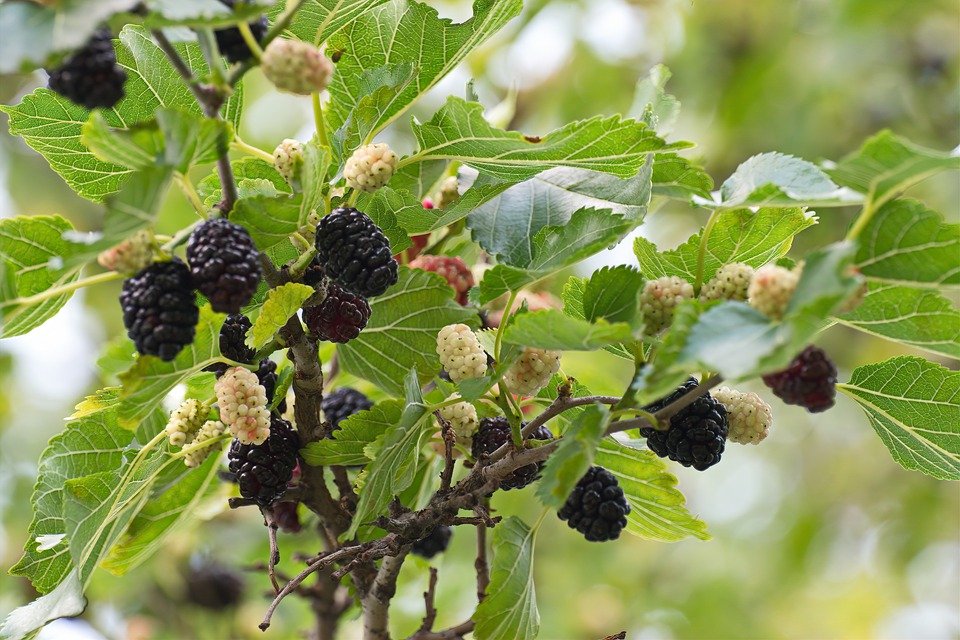
These contents were written and researched by the owners of the SiGi Agricultural Company in collaboration with the students of the Agricultural Technical Institute of Macerata.
If you would like to contribute to expanding the descriptions of these varieties, you can send an e-mail to info@agricolasigi.it
We launched the e-museum of ancient fruits thanks to a social farming project of the Marche region. The translation is by komalingua
This project enabled five young people with cognitive impairments, aged 20 to 25, to work on the farm. They were selected by psychologists and Anffas social workers, supported by the professional educator Il Faro and supervised by UniMc researchers. Coldiretti Marche handled communication and distribution.
This unique and challenging project led to the creation of both a physical and virtual museum of ancient fruits in SiGi’s garden. This is not only a great honor but also a significant commitment that we are willing to continue with everyone’s support. You can contribute to our projects by choosing our products, or you can do so directly here:

